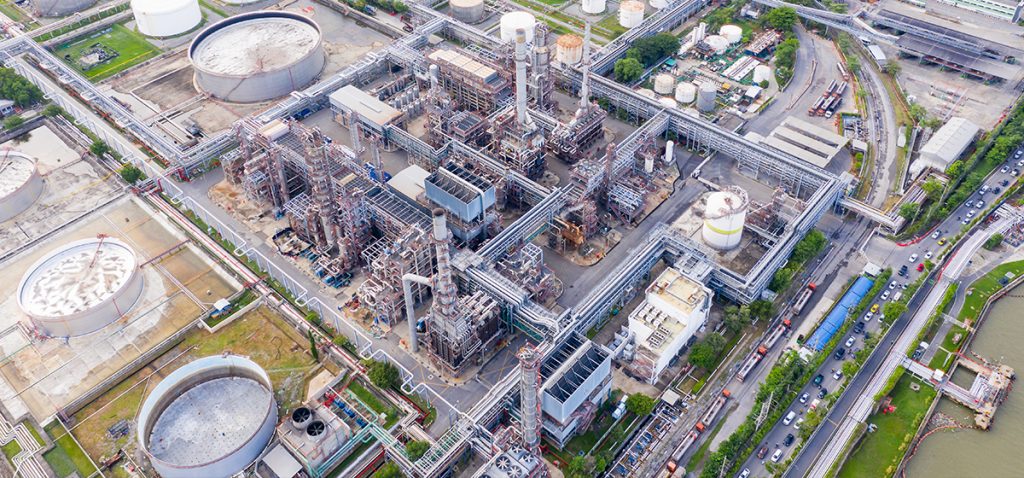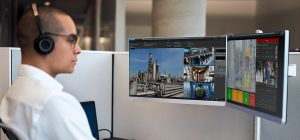The systems, networks, and assets that make up a nation’s critical infrastructure must be kept up and running to ensure the health, safety, and prosperity of its citizens. Countries around the world recognise the importance of protecting their critical infrastructure and invest heavily to secure its continued operation.
The Energy & Utilities sector holds a special place within critical infrastructure because it provides an enabling function across all sectors. It supplies energy that is integral to a country’s economic growth, including fuel to the transportation industry and electricity to businesses and households. Without a stable energy supply, health and welfare would be threatened and a country’s economy could not function.
 As a uniquely critical sector, Energy & Utilities requires special consideration with regards to physical security, especially as it is currently undergoing a major transformation explains Nick Smith, Business Development Manager at Genetec.
As a uniquely critical sector, Energy & Utilities requires special consideration with regards to physical security, especially as it is currently undergoing a major transformation explains Nick Smith, Business Development Manager at Genetec.
Securing critical infrastructure and improving operations
A comprehensive physical security strategy is key to ensuring operational efficiency. Breaches in security often result in downtime that can cost organisations millions of pounds. But, more than that, when it comes to the Energy & Utilities sector, breaches can have a far reaching and potentially catastrophic impact on other critical infrastructure.
What Energy & Utilities organisations need is a unified security platform like Genetec™ Security Center that is designed with critical infrastructure owners in mind. By blending IP security systems within a single platform and unifying video monitoring, access control, automatic number plate recognition (ANPR), and intrusion, a solution like Security Center can help organisations improve their physical security and, as a result, increase their operational efficiency.
Deploying a unified system can help organisations extend their security beyond the perimeter. It can allow them to use radar, LiDAR, fence intrusion detection, and video analytics to detect potential intruders or drones beyond the fence line and then take action to protect facilities before a breach occurs. This can be especially important for isolated facilities like transmission stations or storage depots.

Within the perimeter, ANPR can provide a real-time inventory of vehicles on-site that would allow security personnel to manage access to restricted areas based on license plates. This can also reduce downtime associated with people attempting to access restricted areas without authorisation.
An IP video management system (VMS) can give security teams a clear picture of events and enable them to quickly respond to threats and incidents. Organisations can further improve security with an IP access control system (ACS). For example, by using built-in people counting together with access control events, security personnel can monitor where employees, contractors, and visitors are at all times.
This includes during routine operations as well as incidents and evacuations. In addition to tracking movements over a geographical map or through visual reports and dashboards, the system can also be set up to automatically send reports to key personnel within the organisation as well as to first responders.
Strong cybersecurity is key
 Modern physical security devices and systems are becoming more interconnected, which is helping security teams keep people and organisations secure. At the same time, this growing connectivity is increasing the risks associated with criminal cyber activity.
Modern physical security devices and systems are becoming more interconnected, which is helping security teams keep people and organisations secure. At the same time, this growing connectivity is increasing the risks associated with criminal cyber activity.
Greater connectivity of systems over the internet means that a vulnerable device can become a gateway to an organisation’s data and sensitive information. A poorly protected camera, unencrypted communication between a server and client application, or out-of-date firmware all have the potential to be exploited by cybercriminals.
This means that security systems can no longer focus solely on physical threats. Organisations must choose hardened solutions that also work to protect all other systems and information connected to the network against criminal cyber activity. Companies like Genetec can provide solutions that help organisations protect their data and operations, help them comply with regulations and meet audit requirements without compromising physical security functions.
Because no single approach is enough, any solution deployed within the Energy & Utilities sector must include multiple layers of defense. Genetec security solutions use strong encryption, authentication, and authorisation protocols to protect data captured for management, analysis, and storage. In this way, Genetec is helping organisations incorporate multiple and varied lines of defense to face common and emerging threats and to secure their environments.
Conclusion
As the Energy & Utilities sector undergoes transformation, organisations have the opportunity to build stronger physical security strategies. This in turn will help them to improve their ever-expanding operations and bolster their defenses against increasingly complex cyber threats.
Working in partnership with trusted physical security vendors will help them protect this core component of every nation’s critical infrastructure today and in the future.



